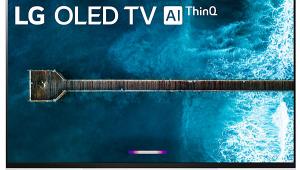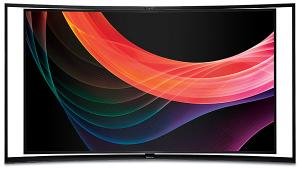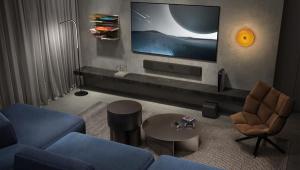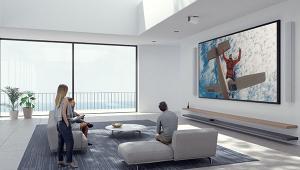LG OLED65E6P OLED Ultra HDTV Review
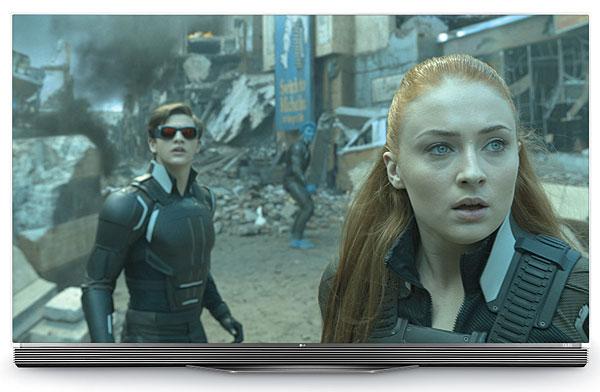
AT A GLANCE
Plus
Outstanding blacks and shadow detail
Nearly flawless off-center viewing
Attractive price (for OLED)
Minus
Still expensive
THE VERDICT
Yes, LG’s OLED UHDTVs do have shortcomings, including their inability to get as bright as the best LCD sets. But OLED’s significant advantages more than compensate and have made these TVs, including the superb OLED65E6P, the new golden goose in the Ultra HD landscape.
I vividly remember plasma displays, and I mourned their passing. But even before 4K came along, LCD TVs—with their brighter images, lighter weight, lower energy consumption, and, toward the end, cheaper prices—were putting a full-court press on plasma technology.
The best LED-backlit local-dimming LCDs can now equal or exceed the performance of plasmas in what were their main calling cards: black level and shadow detail. But now, even LCDs have competition. OLED TVs arrived just about the same time that plasmas faded from the scene. So far, they’re offered only by LG, whose current models are much reduced in price from earlier designs—though they’re still not bargain-basement specials.
What’s Inside?
OLED TVs have nothing in common with the LED sets so prevalent in today’s market. An “LED TV” is simply an LCD set with conventional LED backlighting. LCDs don’t produce light; they merely turn their pixels on or off to allow the backlight to shine through, or not. In an “LED Ultra HDTV,” 8 million LCD pixels produce the picture, but without some form of illumination, that picture would be dark and unwatchable. The LED lighting may be configured into either a few zones along the sides or top and bottom of the screen (so-called “edge-lit” models) or up to several hundred zones (typically fewer) across the back (in what’s referred to as “full-array” backlighting). The priciest TVs often use full-array backlighting with local dimming of individual zones to improve the set’s blacks in specific areas of the image where it’s called for. (Poor black level has always been among the weakest characteristics of LCD designs and the most challenging—and expensive—to engineer out.)
An OLED TV, on the other hand, is like a plasma in that it’s self- illuminating; in fact, the term OLED stands for organic light-emitting diode. Again, there are about 8 million emissive OLED pixels in a set—actually, four times more if you count all the subpixels in LG’s version. Here, each pixel can be individually addressed, even shut off completely if the source calls for it. To refer to an OLED Ultra HDTV as having 8 million local-dimming zones may be a simplification, but it’s correct!
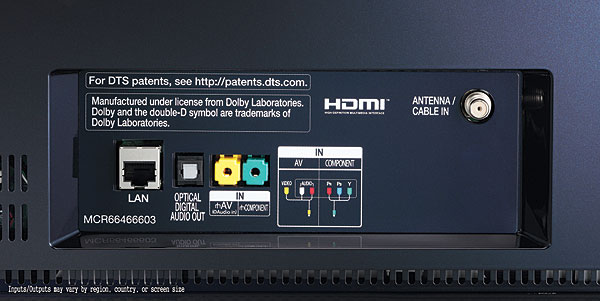
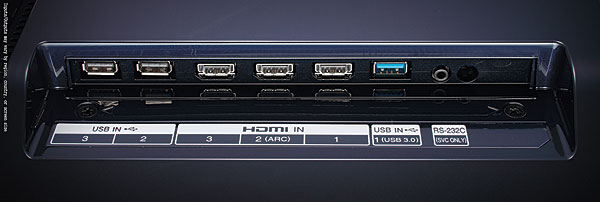
LG’s flat-screened, 65-inch OLED65E6P offers everything a good Ultra HDTV should, except for the peak brightness levels available from many LCD designs, which the OLED pixels just don’t allow—though I’ll have more to say about that later. All of its HDMI inputs are HDMI 2.0a with HDCP 2.2, and the set is compatible with both of today’s primary formats for high dynamic range: HDR10 and Dolby Vision. It boasts the wider and deeper color promised by UHD sources. There’s 3D capability as well (a disappearing feature, to be sure), and two pair of passive glasses are included. A feature called Dual Play, useful mainly with some gaming consoles, enables the separate viewing of two different programs using special glasses (not provided, and different from the 3D variety).
All of the basic video controls are here, but a few of the more import- ant ones are provided only in some picture modes. For standard dynamic range (SDR) viewing, only the Cinema (User), ISF Expert (Bright Room), and ISF (Dark Room) modes offer full White Balance (2-point and 20-point) and color management system (CMS) adjustments.
The OLED65E6P also has three HDR10 modes that kick in when it sees an HDR signal: Vivid, Bright (User), and Standard (User). Only the last one offers useful White Balance controls and a full CMS. Dolby Vision also triggers one of three optional picture modes: Movie Dark (User), Movie Bright (User), and Vivid. The first two have full CMS adjustments but only several fixed Color Temperature selections (no adjustable White Balance controls).
There’s an additional mode in the SDR menu called HDR Effect, which produces a pseudo-HDR picture from an SDR source. As with other HDR sets I’ve tested, most of which provide this sort of “enhancement,” I found it fun to watch for a few minutes, but it varied so much from scene to scene that I soon turned it off and never went back to it.
Motion blur on this OLED set appears close to what I see from an LCD, not the superior rendering we got from plasma. But it never bothered me. TruMotion, LG’s motion-smoothing feature, offers separate De-Judder and De-Blur controls in one of its modes. I soon turned this feature off completely to eliminate any trace of the dreaded soap-opera effect.
 LG’s Magic Remote lacks backlighting but can also control other devices, such as a disc player or a set-top box. Move the remote in the desired direction, and an onscreen cursor will go to the desired menu selection. But as with similar, earlier
LG remotes, the cursor is plagued
by off-center drift—correctable by pointing the remote at the center of the screen and giving it a shake (the remote, not the screen!). The Magic Remote also incorporates voice control and voice-to-text. LG makes a conventional remote, but it must be purchased separately.
LG’s Magic Remote lacks backlighting but can also control other devices, such as a disc player or a set-top box. Move the remote in the desired direction, and an onscreen cursor will go to the desired menu selection. But as with similar, earlier
LG remotes, the cursor is plagued
by off-center drift—correctable by pointing the remote at the center of the screen and giving it a shake (the remote, not the screen!). The Magic Remote also incorporates voice control and voice-to-text. LG makes a conventional remote, but it must be purchased separately.
LG calls its smart TV features set “webOS 3.0.” It’s hard to imagine that you might need more choices than what’s provided here (though with the march of technology, no manufacturer’s internet goodies can be guaranteed future-proof). I used webOS 3.0 primarily to access YouTube and Netflix. As with other such features, it also offers extensive ways to enjoy videos, photos, and music stored on other devices.
On the audio side, the Toslink optical audio output passed both Dolby Digital and DTS multichannel bitstreams presented to the set’s HDMI input by my Blu-ray player, though in their plain vanilla (not lossless) form, of course. And I found the 65E6P’s Harman/Kardon-designed audio surprisingly listenable, though it had a limited volume capability and offered no deep bass.
SDR Performance
The 65E6P passed all of our basic SDR video tests. On a 1080p sharpness pattern, however, even with the Sharpness controls zeroed out and none of the special enhancement features engaged, there was a slight softening of the resolution lines, with some white line edge enhancement also present. Neither of these was visible at more than a couple of feet from the screen. A 4K sharpness pattern, on the other hand, was completely clean when viewed close up, indicating that the softening and the edge enhancement were likely in the set’s 1080p-to-4K upconversion. The Sony XBR-65Z9D LCD Ultra HDTV I recently reviewed had performed similarly. However, Samsung’s UBD-K8500 Ultra HD Blu-ray player provided crisp, clean 4K upconversion on both sets—though for my 1080p SDR viewing here, I stayed with the LG’s own 4K upconversion.
After setup of the basic controls (but before a color calibration), the demonstration scenes on the origi- nal Spears & Munsil High Definition Benchmark Blu-ray looked gorgeous on the LG, showing richly saturated colors with fields of flowers, sprawling manicured lawns, and long, sweeping shots of Puget Sound. Meanwhile, in the opening sequence of a 2006 Pioneer Blu-ray demo disc (ironically, produced to promote that company’s Kuro plasmas!), the background behind a dancer was fully black but still impressively distinguishable from the dancer’s short black trousers.
Following a color calibration, which involved the color management system and both the 2- and 20-point White Balance controls (using just 10 of the latter), the results were generally impressive. But I soon noticed a significant problem with fleshtones. Characters looked sunburned, most noticeable in scenes of low to medium brightness. My first attempt at curing this was to zero out the CMS (a tedious process; there’s no control for simply turning it on or off). This produced no visible difference. But when I turned the Color control to 42 from the default of 50, and the Tint control to G3, the problem was largely solved. Not completely, but well within the range of the creative color choices typically used by filmmakers. While my testing had shown that the factory Color and Tint settings were technically correct, they clearly weren’t. Fortunately, these control changes did not degrade the set’s overall color. I left these new settings in place for the remainder of my SDR viewing, along with the previously established White Balance adjustments. I left the CMS adjustment zeroed out.
Ron Fricke’s Samsara is a documentary mix of stunning (and sometimes disturbing) images, often time-lapsed. The opening scene shows a trio of crazed-looking, elaborately costumed dancers. Other dazzling images follow, from deeply red-cloaked Tibetan monks working on a multicol- ored mandala to the orange-jumpsuited CPDRC Dancing Inmates of the Philippines practicing a complex, synchronized routine. Every color in this film is fully saturated, accompanied by often eye-opening detail, and the 65E6P didn’t miss a beat on any of it.




